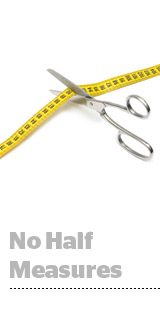
Facebook is doing some early spring cleaning in Ads Manager, the tool advertisers use to create, manage and track campaigns. Starting Thursday, it will begin labeling whether metrics are estimated and start marking metrics that are still being tested.
The goal is to give advertisers more insight into how metrics are calculated.
Knowing when metrics are “in development,” for example, will help planners not get “frustrated by how things change,” said Ed Gaffney, director of implementation research at GroupM. And they’ll know not to “build complex models based on these metrics” until they exit the testing phase.
“Our intention is to be as transparent as possible,” said Brad Smallwood, Facebook’s VP of marketing science.
And to avoid misunderstandings.
Facebook took some heat in September when several sources called foul on its claims to be able to reach more people than exist within certain age groups based on US census data.
The backlash partially motivated Facebook’s labeling initiative. But “not in the way you might think,” Smallwood said.
“We had always talked about reach as estimated, but people didn’t know it,” he said. “We learned from that to be super clear and that we need to do more education.”
Reach on Facebook is treated as an estimated metric based on modeling or sampling, rather than as a counted metric, Smallwood said. According to Facebook, reach isn’t designed to match census estimates, but rather to be used for planning purposes.
To make sure advertisers and agencies are clued into these nuances, Facebook is introducing an education program next month called Measure What Matters focused on creative optimization, auction dynamics and cross-channel insights. There will be tracks for both brand advertisers and performance advertisers.
Last up as part of its transparency kick, Facebook also plans to deprecate more than 20 metrics within Ads Manager by July that are either redundant, outdated, not actionable or infrequently used.
Some metrics simply outlive their utility, Smallwood said.
They “aren’t used tremendously by advertisers and they’re also not that useful to them,” he said.
Metrics on the chopping block include button clicks (the number of times people click a call-to-action button, made redundant by other metrics like link clicks and offers saved); page mentions and cost per page mention (made superfluous by page like and page engagement metrics); and social metrics, like social reach, social impressions and social clicks. Click here to see the full list.
A metric like social impressions, for example, which shows the number of people who saw an ad embedded within a social conversation, is interesting, but it’s just not actionable.
“There’s nothing you can do with it,” Smallwood said. “You can’t use it to manage campaigns or say whether a campaign was successful or not.”
This post was syndicated from Ad Exchanger.

More Stories
Adtech Firm Criteo Is Pitching Hundreds of Retailers on a New Video Ad
2degrees gets loud about NOtifications
Week of April 14 Morning News Ratings: Gayle King’s Space Odyssey Rockets CBS Mornings to Double-Digit Gains